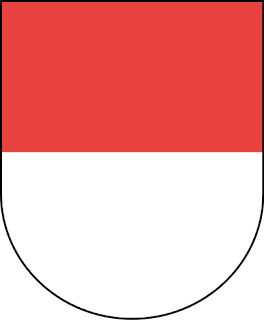Switzerland: All About Cantons!
This week on Adventures at Franklin, we're going to be talking about cantons - the geographic regions that make up Switzerland.
If you're planning to live in Switzerland, it's important to know about the different cantons because each one has varying laws, holidays and even languages.
What even is a canton? You might ask. Well, a canton is similar to a state, like those found in countries like the United States and Mexico. However, each Swiss canton has its own constitution that has been federally approved. There are 26 cantons in total, among them several half cantons. Half cantons are cantons that split at some point. They mainly differ from other cantons in that they only send one member to the upper house of parliament, rather than two.
Franklin University Switzerland is located in Ticino, the only canton in Switzerland where Italian is the only official language. Although Italian is spoken in neighboring Graubünden as well, it has four official languages - Swiss German, Italian, and Romansh.
An overview:
. . .
Whew! That felt like a lot. I hope you found this post informative and interesting! Please let me know if there's something else you'd like to see me write a post about - I can be contacted via the box below.
Arrivederci and till next time,
Gabrielle
If you're planning to live in Switzerland, it's important to know about the different cantons because each one has varying laws, holidays and even languages.
What even is a canton? You might ask. Well, a canton is similar to a state, like those found in countries like the United States and Mexico. However, each Swiss canton has its own constitution that has been federally approved. There are 26 cantons in total, among them several half cantons. Half cantons are cantons that split at some point. They mainly differ from other cantons in that they only send one member to the upper house of parliament, rather than two.
Franklin University Switzerland is located in Ticino, the only canton in Switzerland where Italian is the only official language. Although Italian is spoken in neighboring Graubünden as well, it has four official languages - Swiss German, Italian, and Romansh.
An overview:
- German is an official language in 21 cantons
- French is an official language in 7 cantons
- Italian is an official language in 2 cantons
- Romansh is an official language in 1 canton
- There are 4 cantons with multiple official languages
To read more about languages in Switzerland, check out my blog post on the subject.
And now, on to learning more about each individual canton. I've included the coat of arms, capital, date the canton joined the Swiss Confederacy as it existed at the time, official language(s) of the canton, and a fun fact for each. Enjoy!
Facts About Each Canton
 |
| Aargau
Capital: Aarau
Joined: 1803
Official Language(s): German
Fun Fact: The first female Swiss physician, Marie Heim-Vögtlin, was born in Bözen, Aargau in 1845.
|
 |
| Bern
Capital: Bern
Joined: 1353
Official Language(s): German, French
Fun Fact: Every year on the fourth Monday in November, Bern (city) hosts the Zibelemärit, or onion market, from 6am to 6pm. See my previous post about Bern for more fun facts.
|
 |
| Fribourg
Capital: Fribourg
Joined: 1481
Official Language(s): French, German
Fun Fact: Fribourg was the first French-speaking canton to join the Swiss Confederation.
|
 |
| Jura
Capital: Delémont
Joined: 1979
Official Language(s): French
Fun Fact: Besides railway crossings, there are no traffic lights to be found anywhere in the canton.
|
 |
| Schwyz
Capital: Schwyz
Joined: 1291
Official Language(s): German
Fun Fact: The oldest wooden building in Europe, called "Bethlehem," is located in Schwyz. It's been standing for over 700 years.
|
 |
| Solothurn
Capital: Solothurn
Joined: 1481
Official Language(s): German
Fun Fact: Kraków, Poland, is Solothurn's official twin city (since 1990).
|
 |
| Thurgau
Capital: Frauenfeld
Joined: 1803
Official Language(s): German
Fun Fact: One in every three apples consumed in Switzerland comes from Canton Thurgau.
|
 |
| Ticino
Capital: Bellinzona
Joined: 1803
Official Language(s): Italian
Fun Fact: Walking all of Ticino's footpaths uninterrupted would take about thirty days in total.
|
 |
| Uri
Capital: Altdorf
Joined: 1291
Official Language(s): German
Fun Fact: Uri is one of the three founding cantons of Switzerland. According to legend, it was also home to William Tell.
|
 |
| Valais
Capital: Sion
Joined: 1815
Official Language(s): French, German
Fun Fact: Valais is the number one wine-producing canton in Switzerland, as it is home to approximately 35% of Swiss vineyards.
|
 |
| Vaud
Capital: Lausanne
Joined: 1803
Official Language(s): French
Fun Fact: Vaud is home to Switzerland's most-visited historical monument, Castle Chillon, located on the beautiful Lake Geneva.
|
 |
| Zürich
Capital: Zürich
Joined: 1351
Official Language(s): German
Fun Fact: The average age that women get married in Zürich is 32.5, while the average man is married at 35.1.
|
. . .
Whew! That felt like a lot. I hope you found this post informative and interesting! Please let me know if there's something else you'd like to see me write a post about - I can be contacted via the box below.
Arrivederci and till next time,
Gabrielle

















Comments
Post a Comment